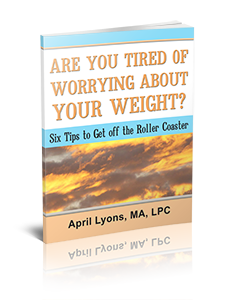Hypervigilance is real. It’s smart to stay prepared and aware. But you don't want to overdo it.
Maybe your experience has been traumatic.
Perhaps you've been unfortunate enough to have endured a previous traumatic event.
If so, it makes sense that you might feel particularly alert for a period of time. The fact is that it takes time to heal.
In this time, your body and mind are attempting to adjust and recover. In the short term you may need coping mechanisms to help you feel safe as you process disturbing and disorienting situations. However, alertness or vigilance can sometimes cross the line into hypervigilance. On the surface, it may feel warranted. Digging deeper, it may be a sign of post traumatic stress disorder (PTSD).
What is Hypervigilance?
Vigilance in its proper context is normal and potentially life-saving. Our body alerts us to dangers so we can react appropriately. In the case of trauma, vigilance can become an unproductive default setting. Some common signs of hyper-vigilance include:
Flashbacks
Nightmares
Invasive thoughts of danger in general or more specifically about the traumatic event
Physical reactions when reminded of the trauma, elevated heart rate, sweating, etc.
You’re startled easily and/or display disproportionate reactions to non-dangerous stimuli
Extreme overanalyzing of situations and checking of your environment
Overestimating the potential negative outcomes of any situation
These outward symptoms may be accompanied by emotional changes like:
Growing detached and numb
Losing interest in the daily activities you once enjoyed
Avoiding any places, feelings, or activities that may remind you of the trauma
Increasingly negative outlook
Why Hypervigilance is Risky
As the above list demonstrates, there can be long-term complications caused by hypervigilance. Not to mention, obsessive behaviors create both mental and physical exhaustion while compromising your sleep. This combination feeds into the cycle, adding to the likelihood of problems at work, in relationships, and in most social interactions.
If you begin to see threats everywhere, it can lead you to avoidant, isolating choices. That isolation will not serve you well as you work toward recovery. This is not to imply that a trauma survivor has not endured a terrible experience. They have and they may have found that hypervigilance helped them. Extreme responses are nothing to be ashamed of. That said, it remains important to find other ways to stay safe after trauma.
4 Ways to Stay Safe After Trauma
Practice Naming What You Feel
Hypervigilance can induce automatic reactions. Therefore, it’s helpful to name what you feel as these reactions occur. Sometimes just awareness can temper the impulse to react strongly to your circumstances.
Set, Enforce, and Respect Boundaries
Boundaries are important for both you personally and your relationships. Mutual respect is a source of safety. If you have a habit of engaging in controlling, hypervigilant behavior with regards to your home, the health and whereabouts of your loved ones, or your own personal space, life may be pretty hard right now. It is vital that you firmly set your boundaries and enforce them when necessary. Just as importantly, become someone who regularly respects the boundaries of others and discusses them cooperatively.
Develop a Positive, Present Mind-body Routine
Remind yourself that you matter by dedicating time each day to your own care. Mindfully pay attention to the sensations, responses, and energy levels you are experiencing. Combat restlessness, discomfort, and fatigue with self-compassion and a variety of self-care activities.
These can range from exercise to affirmation, to simply wearing clothes of your favorite color. Seek out music and laughter. Simple things can make a big difference. Eat healthily and learn some breathing and relaxation techniques. Most of all, find ways to stay in the moment and address your own needs without judgment.
Create a Healthy Support System
It could be two people or it could be ten. Whatever works for you, be sure to have those special people in your life that know you well and are reliable when things get tough. Do your best to share and check-in with loved ones. Ask how they feel about your interactions.
Developing open communication can help you feel less compelled to control and more able to share the responsibility of staying safe. Additionally, your supporters may feel less concerned by your hypervigilence, able to contribute to solutions, and more understanding of your behavior
Remember, Hypervigilance and Trauma Are Not a Source of Shame
You did not ask to be traumatized. We should be alert and interested in staying safe. Still, we should not lose hope or become so fearful that our natural coping mechanisms run amok. If you find you are unable to feel safe after a trauma, it is a clear sign that outside help is warranted. If the fear of is overwhelming, reach out now. Counseling is where you can begin feeling safe and in control again.
With the help of your therapist, you can identify your triggers and your coping mechanisms. Once these patterns are recognized, you’ll be in a better position to move forward. Allow a counselor to help create new awareness and healthy life skills that will contribute to your healing.
If you are looking for a trauma treatment and think we might be a good fit, please contact me for a free online consultation. I am here to help and am looking forward to hearing from you soon.
Learn More about Trauma:


